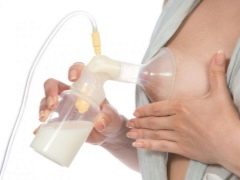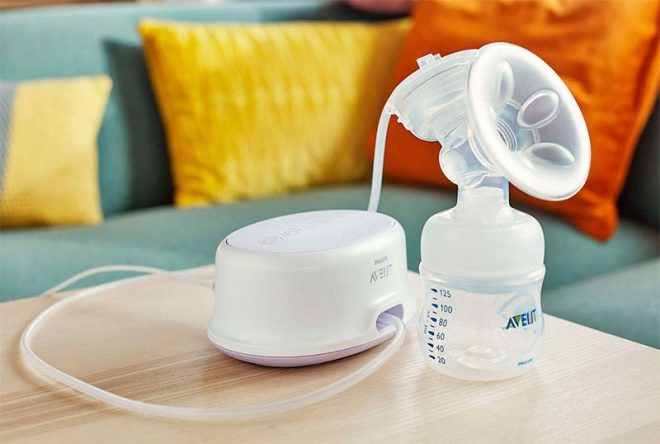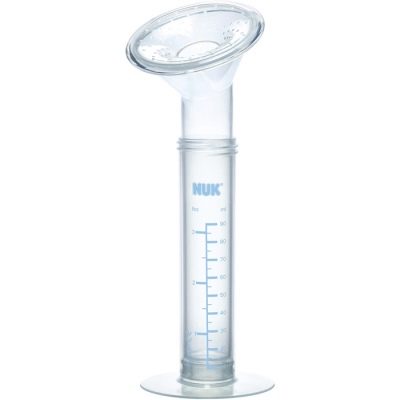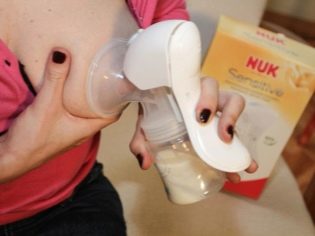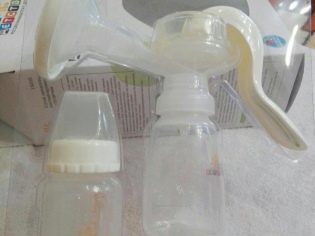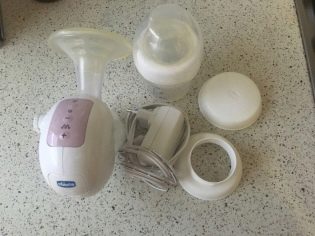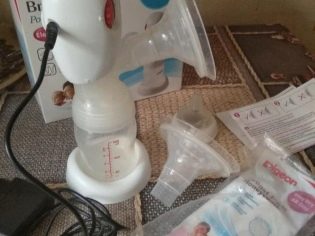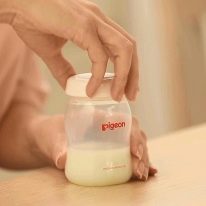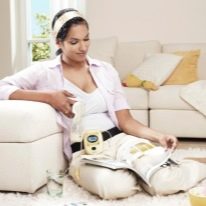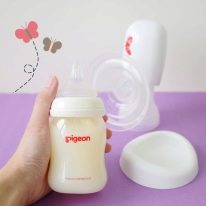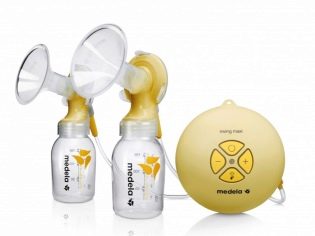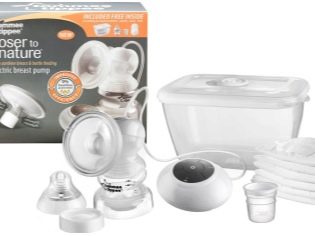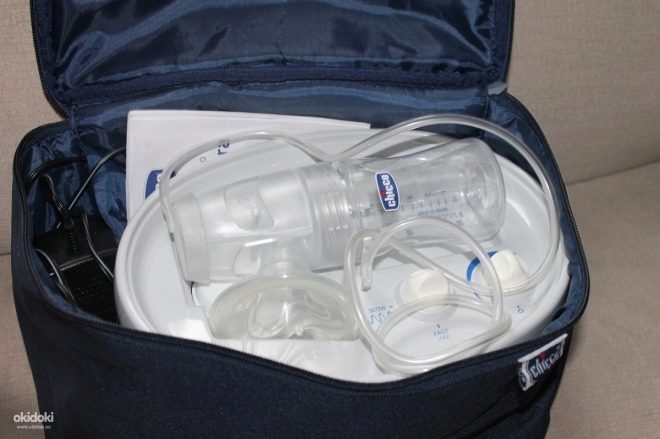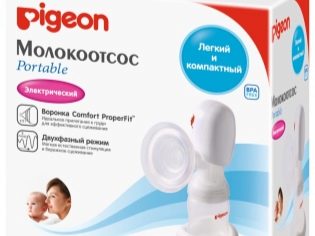Electric breastpumps: how to choose and use?
A breast pump is a special mechanism that includes a reservoir and a vacuum nozzle for expressing breast milk. This device helps young mothers to establish lactation, alleviates their condition and relieves painful sensations.
Characteristic
Many women think about purchasing a breast pump before the baby is born, since this device is actively involved in the processes associated with breastfeeding. That is why doctors advise in advance to take care to select a high quality product. At the same time, it is extremely important not to stop at the first breast pump that came to the eye, but to study as thoroughly as possible all the parameters and characteristics of the devices in order to choose the most suitable option for the young mother.
It is necessary to acquire the mechanism that can most effectively perform its functions, while being convenient to use. A good breast pump is easy to clean, easy to disassemble and assemble. In addition, it is an advantageous combination of "price-quality."
Allocate hand-held devices and machines (electrical). Depending on the specific variety, each can have from one to four modes of operation or the possibility of a soft speed adjustment. Also may vary the full set. In addition to containers and nozzles, the kit may include various spare parts, anatomical breast pads, nipples and various bottles for the collected milk. Each type of product has its own advantages and disadvantages.
Mechanical manual breast pumps come in two forms.
- Pump (or pear) Options are recommended for women who use them from time to time, rather than regularly. The effectiveness of such devices is relatively low, but the cost is low.
- Piston breast pump (also called syringe pump) more productive and convenient, its price is slightly higher.
The following advantages of using manual breast pumps can be highlighted:
- silent operation;
- no dependence on the electrical network, batteries and chargers;
- the young mother can independently control the force of decanting, since it depends only on the physical effort she puts in;
- Manual breast pumps are easy to clean and sterilize.
But the disadvantages are obvious:
- pumping is extremely slow;
- the process requires a lot of effort, which women who have just given birth sometimes simply do not have.
Electric breast pumps are considered to be a more “advanced” type. They are the best choice for those girls and women who are forced to express themselves regularly. This happens for physiological reasons (for example, when a newborn cannot suck on its own) or for family reasons (if a woman has to go to work or for some other reason refuse HB, but does not intend to completely refuse lactation). In addition, the use of breast pumps is recommended for mastitis and for the prevention of lactostasis. Judging by the reviews, such devices have a lot of advantages:
- any electric mechanism works 2-3 times faster than a manual breast pump;
- no physical effort is required from women;
- the device empties the chest as much as possible.
However, there are also disadvantages:
- any electrical device produces a buzz during operation;
- Regardless of which brand you stopped on the product, the device cannot be completely sterilized;
- The cost of electric breastpumps is quite high.
From time to time there are electronic breast pumps. In fact, this is nothing more than an advertising ploy. From a technical point of view, both electrical and electronic devices are based on the same principle of operation. However, the buyer any electronic devices associated with a higher level of quality. Although, of course, such options are better equipped: they have a display, a memory, they can independently remember the rate of squeezing, etc.
At the same time, their prices are very high, because most often such breast pumps are rented.
Principle of operation
The principle of operation of a breast pump depends on its type. With a hand-made product, everything is simple - a vacuum is formed near the nipple areola and, under the influence of force, milk begins to stand out from the mammary glands.
Pump products consist of pears and tips on the glands. In this case, the milk is decanted with each press on the breast. These devices often have a special bottle included. They are easy to clean and require little space, but are considered labor-intensive and crack when used continuously.
Syringe is a simplified two-cylinder model. In this case, the first cylinder is attached to the mammary glands, and the second moves up and down. At the time of movement of the piston, a vacuum is created and milk is released. This option is easy to use, but with frequent work it may also crack.
Piston - breast pumps, consisting of a silicone soft nozzle, which is mounted on the areola and controlled by a special lever on the device. This is a simple and ergonomic option that works silently and does not harm lactation. However, with prolonged use, parts of the device wear out a lot.
Electrical appliances have a slightly different principle of operation. In this case, a nozzle is attached to the chest, and then pressing a special button begins to create a vacuum, which gives the most efficient pumping without any effort on the part of the mother.
How to choose?
When choosing a breast pump, first of all it is necessary to decide which option you need - manual or electric. This largely depends on the financial possibilities, family circumstances, the planned frequency of pumping, as well as on the state of health of the young mother.
Handheld is suitable for rare use and is cheap. Electronic has a higher cost, but can be applied daily. Many women get a breast pump with hands. In this case, it will cost much cheaper than the goods purchased in the store. Before using the device should be sterilized, but it is impossible to do this at 100% in the case of an electrical device.
Therefore, if you need a machine, it is better to buy a new device that was not previously used by strangers.
Recommendations for choosing a manual breast pump
When choosing between a piston and a pumping device, give preference to the first, because, as reviews show, the pump is not so effective and often causes stagnation of milk, which leads to lactostasis. The best option would be to purchase a product, the package of which includes a silicone anatomical pad on the areola. Experts advise to choose an overlay made in the form of petals with small bulges. In this case, the process of expressing milk can be as simple as possible.
Beneficial and simple mechanisms, which also includes a bottle and nipples. This is the only way to be sure that they will fit in the size and notches. In addition, a young woman will not need to pour milk from one container to another before giving it to a child. The process is much more hygienic.
Tips for choosing an electric breast pump
As in the case of manual units, it is better if the breast pump purchased has a pad of soft silicone with petal-shaped bulges.It is important to focus on the size of the nozzle, because in some cases you have to buy them additionally (if you need non-standard sizes).
Electric breast pump powered by a power source. During use, situations often arise when there is no access to the AC network, for example, in nature or in the event of a power outage. Therefore, preference should be given to those devices that can additionally run on batteries, since they can be stocked up in advance.
Keep in mind that the majority of modern manufacturers have launched the production of universal units, which are capable of functioning both in manual and automatic mode. In this case, it is necessary to clarify the presence of a special motor for manual pumping, and in case of its absence - to purchase separately.
If a woman plans to travel with a child or take frequent walks, it makes sense to buy a mobile set, which has a small weight and small size. It is lighter, more compact and usually comes with a bag or a special plastic container for carrying. It is important to pay attention to the material from which the device is made. Polypropylene without bisphenol A content is considered the safest for a child.
A good choice is a device with a two-phase type of pumping - at the first stage, a small massage is performed, during which the breast is prepared for pumping, and at the second stage, milk is received directly. It is desirable that the possibility of using different speeds and modes of operation be provided.
In addition, today you can find a lot of mechanisms that allow you to simultaneously express both breasts. Such breastpumps significantly save time.
How to use?
Before you begin decanting, you should study in detail the features of the operation of the device. Also worth considering some recommendations. Before using the breast pump, wash your hands thoroughly with antibacterial soap, and rub the breast itself with warm water.
All parts of the device (in addition to electronic) must be regularly washed and sterilized. Information on how to do this is always contained in the accompanying documentation and depends on the type of device and the base material. Keep in mind that the device does not need to wipe. It is better to simply leave it for natural drying, slightly covering with a cotton cloth. The same goes for the milk storage tank.
To make lactation more effective, shortly before decanting, you can drink warm water or weak tea. Doctors recommend before using the device a little massage the mammary glands, nipples and areola - these manipulations stimulate the full production of the hormone oxytocin, which is responsible for the formation of milk in the breast of a woman. Before decanting, you should take a comfortable body position - usually women sit down, putting a small pillow under the lower back. If during these manipulations a little bend forward, then the milk will begin to flow from the lobules more actively and better flow out of the breast.
It is important to correctly install the device. The nipple must be located in the center of the funnel, and the edges of the device must tightly touch the skin of the breast. If the fit is not tight enough, then a vacuum is not formed, and therefore, the pumping out will not work. The nipple should be in a free state, its contact with the funnel walls is unacceptable, otherwise pumping will be accompanied by strong painful sensations. The funnel should be selected in such a way that its diameter matches the size of the breast.
Press the instrument button (or pear) until the first drops of liquid appear. At first its volume is small, and the process is rather slow, but after a few minutes a jet is formed.
Straining should be done immediately after feeding, so that the baby can get a full breast. So it will be easier for him to suck. If in the course of pumping a young mother feels tired and wants to relax, then you should take a short break and gently massage your chest.
The device should stay close at this time.
It should be strained until the mammary gland becomes completely soft, and the dense lobules are not smoothed out. When using an electrical device, it usually takes about 15 minutes. Manual breast pump lasts longer.
If no milk appears during the first five minutes after applying the device, discontinue the procedure. Go back to pumping later. If a woman feels discomfort and discomfort while working, the work should also be suspended and the device should be correctly assembled.
The resulting milk must be stored in a refrigerator in a tightly closed bottle. Before use, it should be heated in the microwave or in a water bath. It can be stored no more than 2 days.
If desired, the milk can be frozen, then its shelf life will be increased to 3 months.
Top models rating
Among electric breastpumps, Avent products are the most popular. They are compact and ergonomic, have anatomical attachments and imitate baby's sucking, which helps prevent cracks in the nipples. In the course of using the device, light massage movements are also simulated, due to which a woman has a flow of milk.
A lot of good feedback received products of the Swiss company Medela Harmony. Breast pumps of this brand are silent, easy to use, and also allow you to adjust the speed of suction.
Third place belongs to the company Tommee Tippee Closer to Nature. The advantages of these products are good equipment, including additional containers for sterilization and transportation, as well as the presence of a funnel and special rings on it.
However, it should be noted that these breast pumps are not very convenient for owners of large breasts. But for women with small size, they are quite effective and comfortable.
Chicco products proved to be excellent, equipped with a rather comfortable nipple. The device has a special adjustment that allows you to avoid pulling nipples. However, if a young mother produces too much milk, then it does not decant in full, which means there is always the risk of developing mastitis.
Products of the domestic manufacturer "World of Childhood" are considered the most successful in terms of "price / quality." In addition, the breast pump from this company can be used with any containers. This is a good purchase, given the extremely affordable cost of the product.
Tips
There are situations when even the most powerful breast pump works properly and is assembled correctly, but milk does not flow out of the breast. This may be due to several factors.
A low milk content in the breast happens if the time for manipulation is not correct (for example, when the child has already emptied the breast and the new milk has not yet formed). In this case, the mammary gland is soft to the touch, and with any pressure on the nipple, the liquid is shown in small drops. In this situation, you should repeat the procedure after a while.
Milk stasis, in which duct blockage occurs, is called lactostasis. It is accompanied by severe pain, fever and deterioration of the health of the mother. With such symptoms helps light massage and frequent attachment of the child to the chest.
But if the problem is not resolved within a day, you should consult a doctor. Otherwise, the likelihood of developing mastitis.
It is worth remembering that if the chest is inflamed, pus comes out of it, then the child is fed from a healthy one, and the patient must be decanted with a breast pump to maintain lactation processes. If this is not done, the condition may worsen.In addition, milk production can be significantly reduced.
You will learn more about electric breastpumps in the following video.
